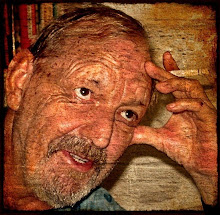There is an earlier 'number' system, which linguists distinguish as a trial, meaning something like a few, ie a new concept, better than just a one or a two. (I'll discuss the Wik-Mungan Oz Aboriginal number system in a later post - it's very relaxed).
I'll refer you to an article at Wikipedia, and if you get out of that alive, understanding what you've just read, I'll send you a FREE OFFER for the Siargao Diet .
-----------------------------------------------------------------------------------
In most of the Austronesian languages, 5 has the same meaning as lima = hand
Which is quite obvious, because almost everyone starts counting on their fingers.
Lima=hand=5 is all-pervasive in most Austronesian (An) languages:
proto-Austronesian - *lima
Hawai'i (USA) - e-lima
Maori (New Zealand)- rima
Madagascar (Africa, but no oil - still independent) - dímy
Easter Island (Chile) - rima
But it isn't the same in other An languages, although their word for 5 may be the same as, or has a relationship to hand:
For example, bang, or something very like it, is very common around New Guinea:
5 = bang-kud'ai - means 5-1 in a 'Papuan' language, Bom in the Eastern Highlands of New Guinea.
5 = agi banggia-ng gafen i sib (hand = banggia) in Sirasira, a dialect of Adzera, in the Markham Valley, Papua New Guinea.
5 = pinggari pontene - means 5/1 in Sera, a very 'primitive' An language from North New Guinea. More on this in a later post.
5 = bäni in Gedaged, another East New Guinea An language.
5 = abainakinta in Bargam, another 'Papuan' language (abainakin = thumb, ta = 1, in this language, hand/arm is amulik)
5 = y'eting in Abui, a 'Papuan' language in Timor, thousands of miles away. (tang bang = to carry)
5 = bagerata in Malasanga, an An language on the North coast of New Guinea. (bage=hand) 5 = aipan in Wuvulu-Aua, An speakers on a tiny atoll North of New Guinea (pani = hand)
In the An language, Ansus, of Maluku, -bang means 'palm of the hand'. I don't have many (meaning almost none at all) sources for the word palm, but in a local Philippine language, Cebuano, it is palad. Flipped over, (metathesis), dalap means handspan, ie 4 inches.
The strangest example of this particular morpheme (word) is the Formosan (Taiwan) 5 = bangan/mangan, in a dialect of Atayal.
Formosa (Taiwan) is reckoned to be the place where the whole An language started, so just how did a 'New Guinean' word for hand get all the way back there?
Many, if not most, Austronesian and 'Papuan' languages in and around New Guinea also use their own hand word:
Language An/Pap....Hand .....Five
Irahutu An ..............fra- ............přande-pinde
Taupota An...........ura...........ura i-tutu
(hand-complete, ie fist. Very unusual, because Taupota has both nima and ura for hand, but prefers to use the 'wrong' one for five)
Weliki Pap...............meme .......meme bisuk
Selepet Pap..............bot ..........bot nombok
Nukna Pap...............get............get kamandauk
Sialum Pap.............mete.........metam
Burum Pap.............boro .........boro kun
Mesem Pap............ bainim.....bainimbeke
Kube Pap.................mere........mere mong
Ufim Pap................ kande......kande kwa
Hote An...................baheng....baheng pi
Maisin An/Pap......fake..........faketi
...and in most of these cases, the word for five is 'hand-one' - that is, you've counted the fingers of one hand, it's finished now, so you'll go on to the other hand, and repeat the performance.
In many 'primitive' An and Papuan languages, the word for hand and arm was the same. It's only my speculation, but I think they only began to separate the meanings of hand and arm when fingers began to be used for counting, as in:
Auhelewa An....harigigi .....'all my fingers'
---------------------------------------------------------------
There was a crucial stage, when people stopped counting on their fingers, and just thought of the number 5 as a definite abstract amount, ie more than a few, and less than very many.
Number 5 probably began as a 'handful' and then developed into something that people could assume as a certain definite quantity that the ones they were talking to could trust.
You can tell that this happened in certain languages, when the words for hand and five begin to diverge.
Lavongai New Britain An.......kunga-......alima
Uruava Solomons An......kabe-na.....rima
Note that in Uruava, they're still using a 'bangi' word for hand, but five is a completely separate new word.
and so on .... there's a definite line separating the mainland New Guinea An and Papuan number systems, that give every evidence of growing up in situ, from the later arrivals, the 'proto-Austronesians' who came in with their ready-made new simple number names.
In New Guinea, this line roughly follows the limits of the 'conventional' language sub-groupings 'North New Guinea Linkage' covering the North coast of Papua New Guinea, right tound the corner to the Huon Gulf, and the southern half of New Britain Island, and 'Papuan Tip' which is basically the An languages of the 'tail' of Papua-New Guinea. It's roughly the area where the proto-Oceanic language is thought to have been spoken.
But they are not limited to this area alone; many of the number systems and names in Vanuatu and New Caledonia also show definite signs of growing their own number systems.
The presence of the 'aberrant number systems' in both of those areas strongly suggests that they were settled initially by Melanesians before the new PAn number system had arrived.
Where did these 'proto-Austronesians' with their new way of counting, come from?
Well, according to the current paradigm, they poured out of Taiwan, the original homeland of the Austronesian languages, pushed by the expansion of the Han Chinese, and went on, intrepidly, to conquer the oceans east and west of them.
Well, maybe they didn't. Perhaps they invented and grew their own language family (or at least, their number systems) right there, somewhere in the thousands of islands of South East Asia, or off the North coast of New Guinea, from an ancestor language that gave birth both to them and to the 8 major families of languages in New Guinea, which is a small continent in its own right.


